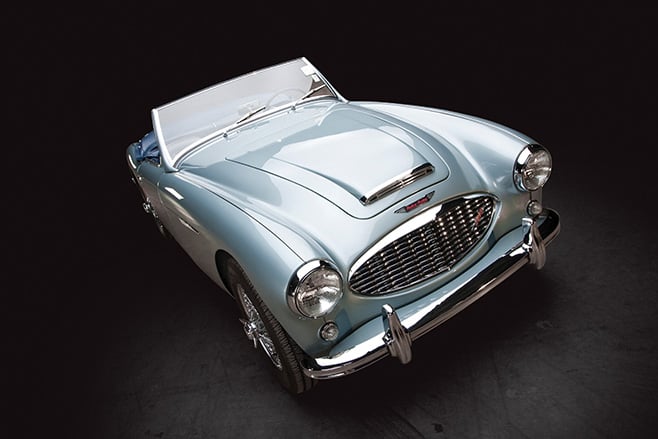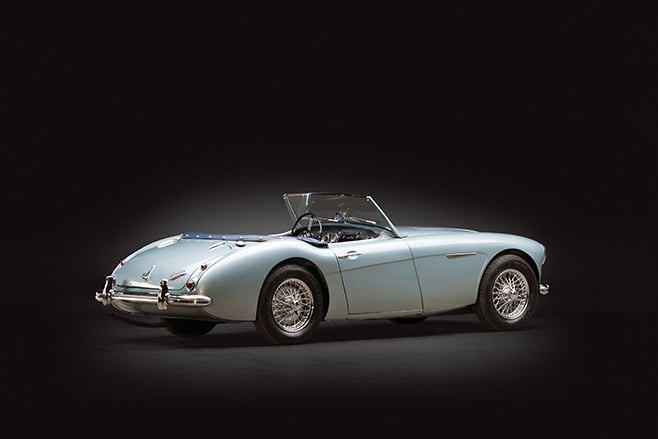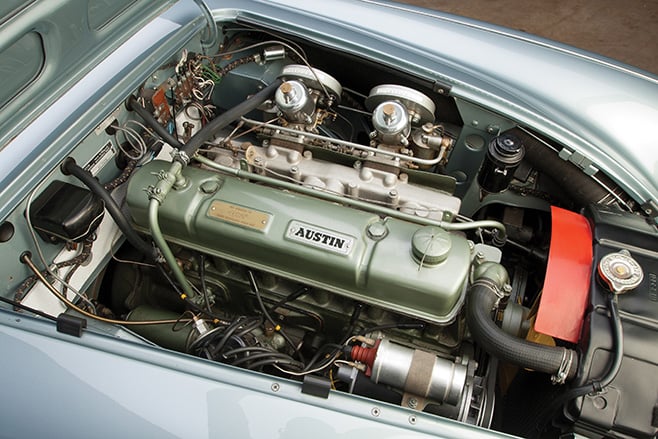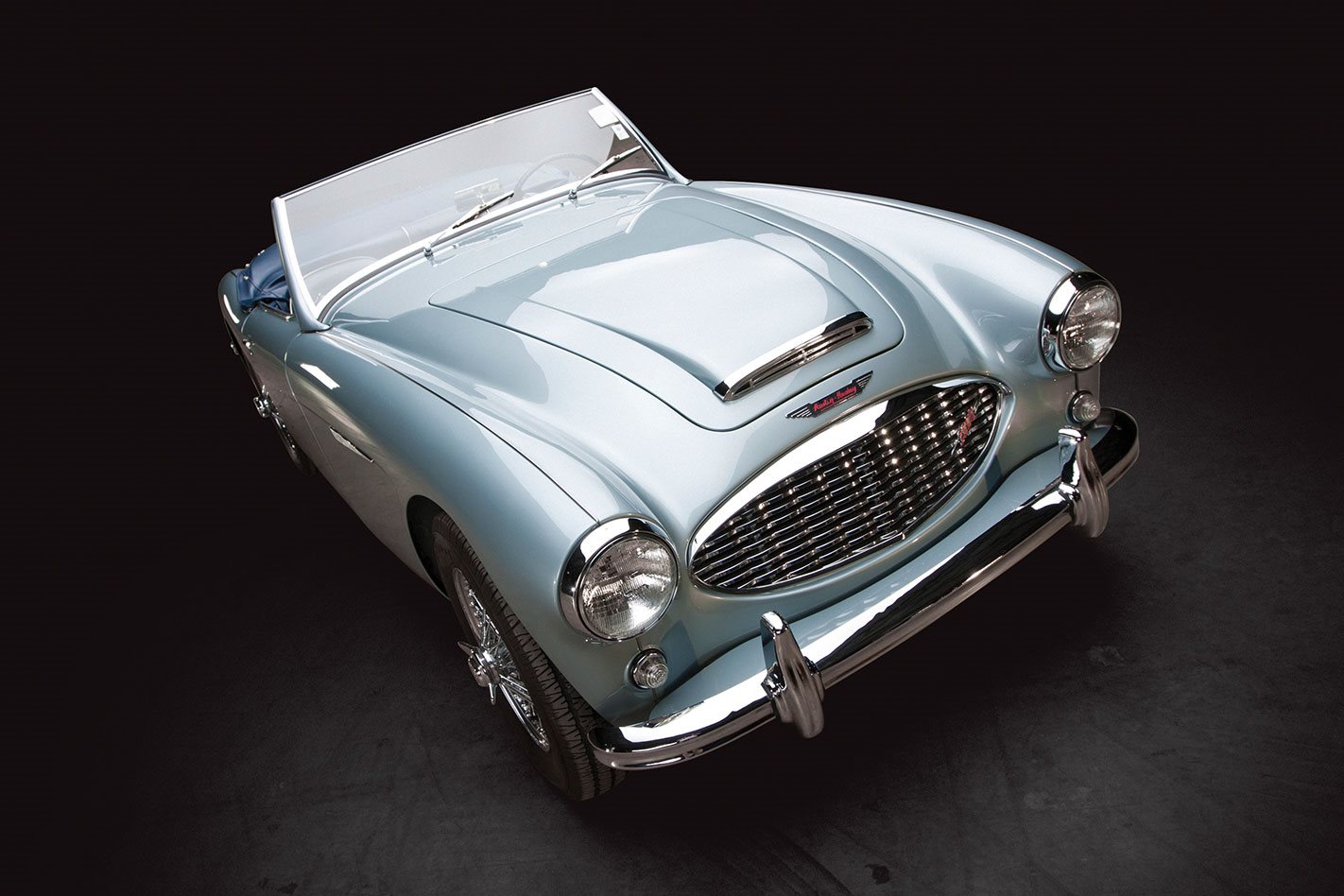It’s a remarkable story: the child of London dentist Alfred Moss becomes smitten with cars and goes on to be a world-beating driver. No, not Stirling – though he did all right – but his sister Pat, many of whose international rally successes were achieved in an apparently unlikely vehicle, the Austin-Healey 3000.
The ‘big Healey’, launched in 1959, was an evolution of the four-cylinder Austin-Healey 100/4 of 1952. Far from a purpose-designed competition car, the roadster was developed for export to the booming, post-war US market.
In 1951 British engineer, rally driver and car maker Donald Healey had created the Anglo-American hybrid Nash-Healey roadster for just this purpose. But it was pricey, costing even more than Jaguar’s XK120, and Healey set new sights on the niche between the Jag and MG’s antiquated T series.

Clothing Austin mechanicals in a sexy, all-steel body, the Austin-Healey 100/4 was such a hit at the 1952 Earls Court show that Austin took on full production, under licence to Healey. The 20-year agreement would also later produce the Sprite.
The new Austin-Healey 100/4 was an immediate success, and in 1956 – in response to the Chevrolet Corvette and Ford Thunderbird – it gave way to the 100/6, with a 25mm longer wheelbase and a 2.6-litre, six-cylinder engine. In 1959, a capacity increase, further engine tuning and Girling front disc brakes produced the burly 3000. Stylish, powerful and fast, it was still unsophisticated, being built on a simple ladder chassis with coil/wishbone front and leaf-sprung rear suspension damped by 1930s-tech lever-arm units.
Though famously hairy to drive near the limit, the 3000 was very popular as a club-level racer, and in 1960 an alloy-bodied GT version was homologated for races like the Sebring 12-Hour.

Surprisingly, the low-slung roadster (and nominal 2+2 version) found its greatest success in rallying, with Pat Moss’s second on the 1959 German Rally and 1960 Alpine Rally and victory in the 1960 Liège-Rome-Liège being highlights among many class wins.
Power and comfort increases attended the 3000’s evolution through Mk1, 2 and 3 guises, though the car retained its 2337mm wheelbase. From 1962, midway through the Mk2 run, a subtly revised ‘convertible’ body created a more useable 2+2 cockpit, which would continue for the Mk3.
When production ceased at the end of 1967, about 43,000 examples of the 3000 had been built, from a total of about 72,000 100-series cars. Reportedly, 90 percent were exported to the US.

Twinning ways
BMC’s C-series in-line six featured a cast-iron block and head, with pushrod ohv. Bored to 2913cc, the twin-carb 3000 Mk1 made 92kW; the Mk2 98kW, before Mk3’s bigger, twin SUs, dual exhausts and hot cam brought 112kW at 4750rpm and 224Nm at 3000rpm. A Mk3 did 0-100km/h in 10sec and a top of 190km/h via a four-speed manual with overdrive.
Cushy convertible
The 3000 Mk1 (pictured) and Mk2 came as a BN7 two-seater and BT7 2+2. They were superseded by a redesigned 2+2 (BJ7) ‘convertible’, with wrap-around windscreen, wind-up windows and vertical-slat grille. Cockpits grew cushier, with final Mk3 (BJ8) boasting wood veneer dash and leather trim. Weight was contained to 1180kg.

The 1959 Austin Healey 3000 by the numbers
- 190km/h top speed
- 1931: Donald Healey wins the Monte Carlo Rally in an Invicta
- 17,712: total Mk3 (BJ8) produced, most popular 3000 variant
- 1971: Austin-Healey marque retired by BMC after 20-year agreement expires





